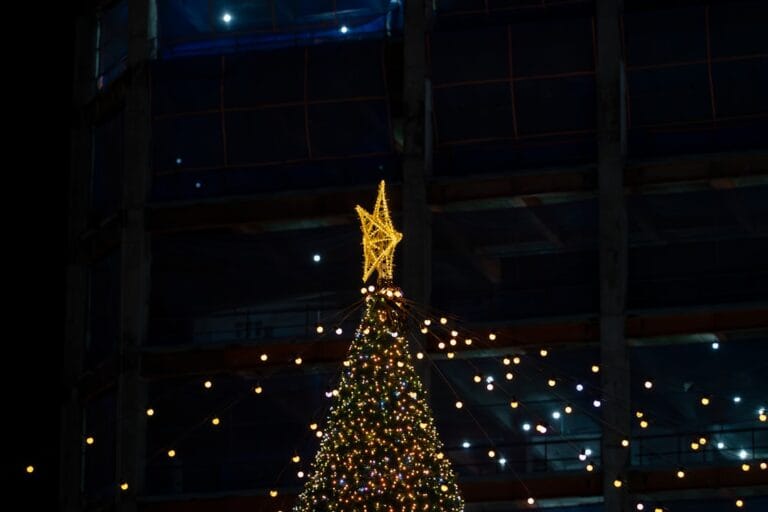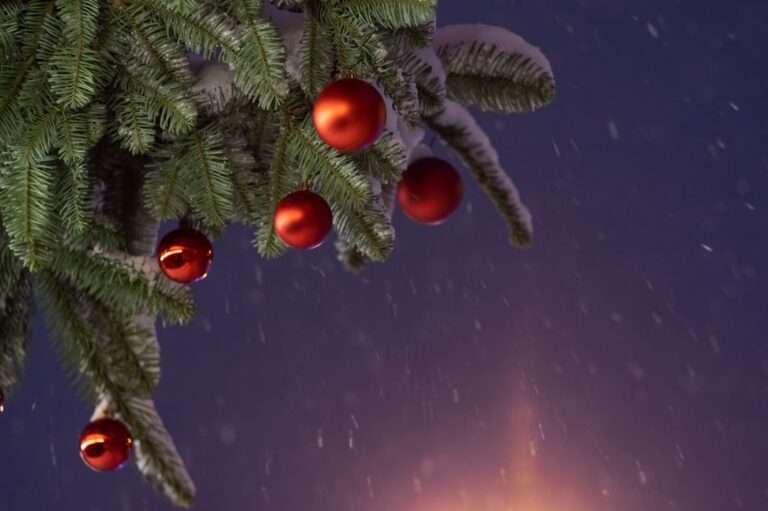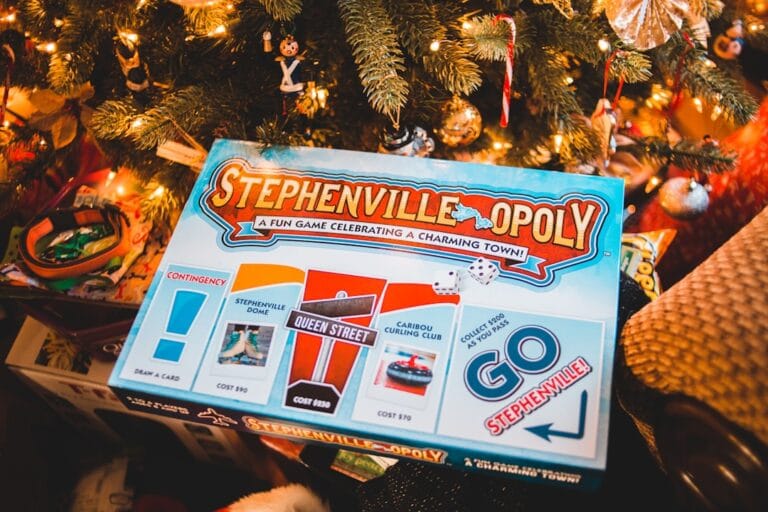Christmas tree lighting has evolved over 400 years, starting with candles in the 1600s and advancing to today’s energy-efficient, app-controlled LED systems. Here’s a quick summary of key milestones:
- 1600s–1800s: Candles symbolized faith but posed fire risks. Early safety measures included improved candle holders and keeping water nearby.
- 1882: Edward H. Johnson introduced the first electric Christmas tree, making lighting safer and more visually striking.
- 1930s–1990s: Incandescent string lights became affordable and widely used, offering multiple colors and designs.
- 2000s–Present: LEDs replaced incandescent bulbs, using 90% less energy and lasting 25 times longer.
- 2015–Present: Smart lighting systems introduced app control, voice activation, music syncing, and customizable patterns.
Modern systems, like Philips Hue and Twinkly, offer millions of color options, energy tracking, and weather resistance for outdoor use. Prices range from $50 for basic kits to over $500 for advanced setups.
Quick Comparison:
| Era | Technology | Features |
|---|---|---|
| 1600s–1800s | Candles | Fire hazards, religious symbolism |
| 1880s–1920s | Electric Bulbs | Safer, hand-wired, limited colors |
| 1930s–1990s | Incandescent Strings | Affordable, multiple colors, mass-produced |
| 2000s–Present | LED Technology | Energy-efficient, durable, color-changing |
| 2015–Present | Smart Lighting | App-controlled, voice-activated, programmable |
From early candles to modern LEDs, Christmas tree lighting reflects both technological progress and the enduring holiday spirit.
The Evolution of Christmas Tree Lights: A Journey Through …
Early Candle Lighting (1600s-1800s)
From the 1600s to the 1800s, candles lit up Christmas trees, representing faith while also introducing serious fire hazards.
Candles and Their Religious Role
In early celebrations, candles on Christmas trees carried deep religious meaning. Each flame symbolized Jesus Christ as the "Light of the World", serving as a visual expression of Christian belief. The soft glow of the candles added a sense of reverence during evening worship.
In German Protestant households, small white candles were often placed on tree branches. These were usually lit on Christmas Eve and occasionally during the days leading up to Epiphany. While this practice held spiritual importance, the fire risks it posed soon became a concern, leading to efforts to make it safer.
Early Safety Measures for Candle Holders
Initially, candles were attached to tree branches using wire or string, a method that was both simple and hazardous. Over time, families began using improved candle holders to reduce the danger. They also kept water or sand nearby to quickly address any accidents. These early precautions laid the groundwork for later advancements in Christmas tree lighting.
Electric Lights Begin (1880s-1900s)
As the dangers of candle-lit Christmas trees became more apparent, inventors searched for a safer solution. This led to a major change in how holiday trees were decorated. In 1882, Edward H. Johnson, who worked as vice president of the Edison Electric Light Company and was an associate of Thomas Edison, lit up the first electrically illuminated Christmas tree. This event marked the start of a new era in holiday lighting, introducing a safer and more visually striking way to decorate trees. It also set the stage for the evolving light designs that would shape holiday displays in the years ahead.
sbb-itb-df5c804
Light Types Through the Years
1930s-1970s Light Styles
From the 1930s to the 1970s, decorative lights underwent changes aimed at improving festive displays while using less energy. By the 1960s, smaller bulbs became popular, allowing for more detailed designs and consuming less power. These developments set the stage for future electronic advancements.
LED Lights Take Over
By the late 1990s, LED lights revolutionized holiday lighting. They offered longer lifespans, used less energy, and were more durable than earlier options. This breakthrough opened up new possibilities for brighter and more dynamic displays, giving decorators more room to experiment.
App-Controlled Systems
Today, smart lighting systems let users control colors, patterns, and effects directly from their smartphones. These features make holiday lighting interactive and allow for endless customization to match any celebration theme.
Major U.S. Tree Lighting Events
Tree lighting ceremonies in the U.S., like the iconic Rockefeller Center event in New York City, highlight the blend of holiday tradition and advancements in lighting. Since its start in 1933, the Rockefeller Center tree lighting has become a symbol of celebration, showcasing how holiday displays have evolved alongside lighting technology.
The White House Tree Ceremony is another key event, emphasizing both national tradition and unity. It combines modern lighting techniques with historical significance, reflecting the progression of holiday displays in the country.
These events celebrate cherished traditions while also showcasing the future of holiday light displays.
Next Generation Light Display Tech
Smart LED systems are transforming holiday lighting with features like voice control, music syncing, and automated schedules, creating more engaging and interactive experiences. These systems are designed to be energy-efficient and easy to use, offering a fresh take on traditional displays.
Brands like Philips Hue and Twinkly provide millions of color options and customizable patterns through smartphone apps. Their systems include features such as:
- Instant pattern adjustments
- Music sync for dynamic displays
- Smart home integration
- Energy usage tracking
- Automated dimming and scheduling
LED technology uses up to 90% less energy than incandescent bulbs and lasts 25 times longer, cutting costs and reducing waste. Advances in connectivity, color blending, and dimming make these systems visually appealing and simple to operate.
Prices for modern setups range from $50 to $200 for basic kits, with high-end professional systems exceeding $500. These advanced systems often include:
| Feature | Benefit |
|---|---|
| Wi-Fi Connectivity | Control lights remotely via smartphone |
| Voice Control | Operate hands-free with smart assistants |
| Color Animation | Create dynamic, custom light shows |
| Power Monitoring | Keep track of energy use during the holidays |
| Weather Resistance | Durable designs for outdoor use |
As the technology evolves, we can expect even better energy efficiency, smarter controls, and seamless integration with smart home devices. The future of holiday lighting is set to deliver more interactive and eco-friendly displays.
Conclusion
Christmas tree lighting has come a long way, evolving alongside American holiday traditions. Starting with candlelit trees in the 16th century, we’ve progressed to modern LED systems that are safer and more versatile.
Now, smart lighting takes things further, offering safer, energy-efficient, and longer-lasting options compared to older incandescent systems.
Holiday lighting, once a luxury, has become accessible to millions. Today, choices range from simple LED strings to high-tech smart systems, giving everyone the chance to create stunning displays.
Looking ahead, advancements in smart technology and energy-efficient designs promise even more interactive and eco-conscious displays. These innovations will keep the tradition of beautifully lit Christmas trees alive for generations to come.






